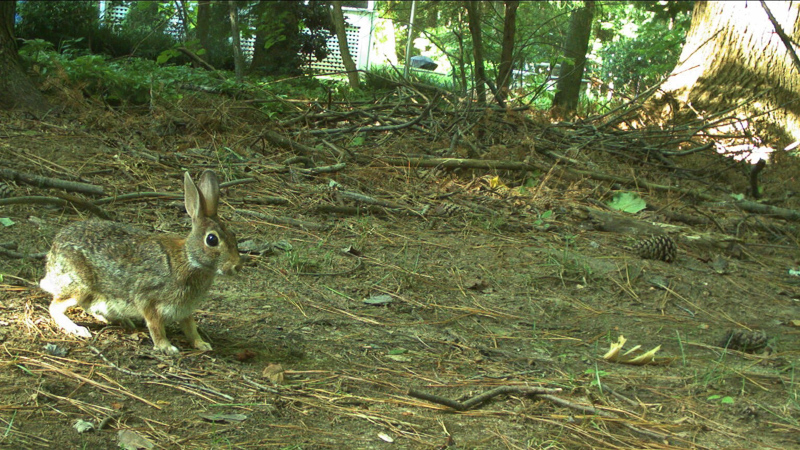During ‘Anthropause,’ Animals Moved More Freely
For immediate release ‐ June 12, 2023
Contact: Jon Pishney, 919.707.8083. Images available upon request
 An eastern cottontail captured on camera through the Raleigh Backyard Sustainability Survey Project. Credit: eMammal. Click image for larger version.
An eastern cottontail captured on camera through the Raleigh Backyard Sustainability Survey Project. Credit: eMammal. Click image for larger version.
By Laura Oleniacz, NCSU News
A new study used GPS data to track the movements of 43 species of mammals around the globe before and during the COVID-19 pandemic, revealing that animals were able to move more freely during lockdowns.
The findings, made by a team of international scientists, are significant because they show that the effect of the human footprint on animals is not just limited to physical infrastructure.
“This study shows that overall, it’s not just the infrastructure – the houses and the roads – that impacts wildlife, it’s actually humans,” said study co-author Roland Kays, research professor at North Carolina State University and director of the Biodiversity Lab at the North Carolina Museum of Natural Sciences. “In the past, we’ve talked about the human footprint as made up of all the infrastructure we have on the planet. We were never able to untangle the people from the infrastructure because they were always together. In this case, the lockdown separated people from the infrastructure, so we were able to isolate how much of an impact the people themselves have.”
Published in the journal Science, the study was designed to tell the full story of how the “anthropause” – the reduction in human activity to limit the spread of COVID-19 – affected mammals. Researchers used GPS tracking data for 2,300 individual animals around the world to compare their movement during the 2020 lockdowns to their movements in the same period a year earlier.
Read the interview with Roland Kays in The Abstract, NCSU’s research blog.
For more information about our upcoming activities, conservation news and ground-breaking research, follow @NaturalSciences on Instagram, Twitter and Facebook. Join the conversation with #visitNCMNS.

